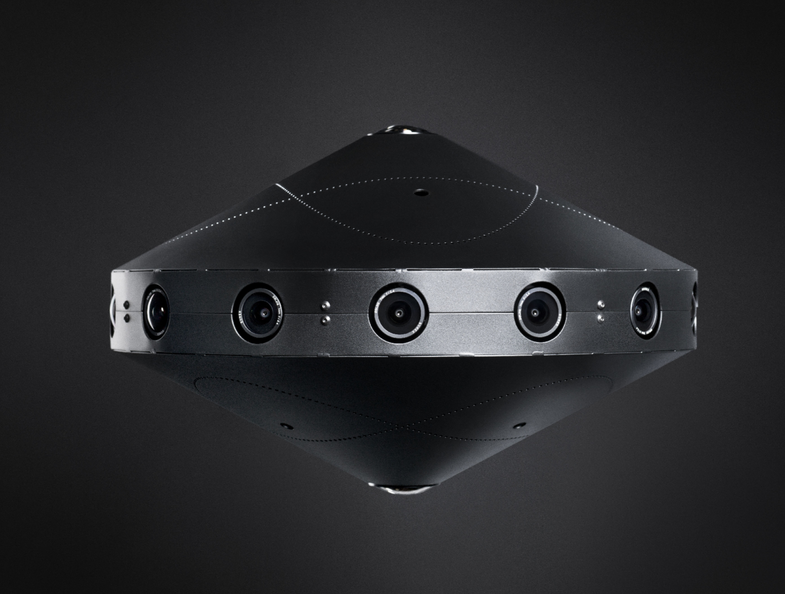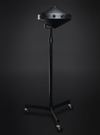Facebook Has Designed A 360-Degree Camera For The Open Source Community
The Surround 360 was unveiled today

We may earn revenue from the products available on this page and participate in affiliate programs. Learn more ›
For a software company, Facebook is starting to get more and more entrenched in building hardware.
Facebook announced the Surround 360 camera today at its F8 developers conference–a camera that will not be available commercially, but is just a design open for anyone to build or modify. The hardware is also coupled with custom software that automatically stitches together the immense amount of high-resolution video the camera records, and permits wireless control of the camera.
“We care a lot about just kickstarting and inspiring the ecosystem as much as we can,” said Chris Cox, chief product officer at Facebook.
While the company isn’t manufacturing or selling the cameras, Cox says the team sees it as a high-end “reference camera,” that the rest of the community could base their designs on.
According to Cox, making VR video breaks down into three steps: capture, processing, and delivery. Facebook already has a clear advantage in the delivery of this content, so now the plan is to break down the barriers for capture and processing.
But here’s the catch: Facebook engineers estimate that the entire build costs around $30,000 in parts.
The camera feels unabashedly high-end, with 17 high-resolution cameras cased in a full aluminum body. There were very few compromises made in the design. Using two aluminum plates to sandwich the cameras helps ensure stability. If they had used 3D printed or plastic plates, they would warp from the heat of the cameras, says Brian Cabral, an engineer on the project.
Each of the cameras has 2048×2048 resolution and can capture up to 60 frames per second. The entire array is 41 megapixels, and transmits up to 30 gigabits per second. Fourteen cameras are located around the outer ring of the VR rig’s enclosure, plus one on the top, and two on the bottom. The rig is held by a thick pole, and having two cameras on each side allows the software to automatically remove that support system from the video. However, the base of the pole still remains in the video.
And while the camera can be operated from a distance using browser-based software, it’s not an entirely wireless solution. Each camera requires its own cable snaked out of the camera to a capture device, much like the ones used in professional video production.
But a lot of this hardware is needed to make a seamless VR experience that’s not only 360 degrees, but 3D; the camera also gives a sense of depth. The camera is able to achieve this effect by extremely specific camera placement, and making sure all the cameras are genlocked. Genlocking the cameras means each camera is synchronized with all the rest, down to the frame. So when you turn in VR, every change to the video is happening simultaneously.
“The eye is very hard to fool. Two eyes are even harder to fool,” Cabral said.
And when the video is imported, Facebook’s open-source software takes care of all the stitching, a process that could otherwise take months of post-production for comparable video quality.
While GoPro and others have released high-end camera options, the Surround 360 differs in the synchronization and full-software documentation from Facebook.
While anyone can build directly from Facebook’s open-source design, the idea is for the community to take bits and pieces that have already been developed and fold them into existing designs.
This move shows Facebook’s investment in 360-degree video and virtual reality, since the inclusion of 360-degree video on their News Feed and the debut of the Oculus Rift and Gear VR.
The hardware design and software will be available this summer.





